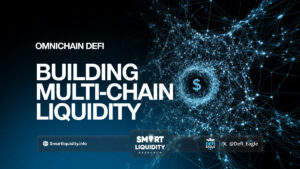The Ultimate Smart City Foundation by Wanchain


Wanchain introduced article The Ultimate Smart City Foundation.
While the 2020s is likely to be remembered for its introduction of COVID-19, the lessons it has brought have undoubtedly spearheaded new ideas regarding cities of the future. According to the United Nations, the number of megacities whose populations are greater than 10 million are expected to increase from 33 to 43 by 2030. This means that by 2030, “urban areas are projected to house 60 percent of people globally and one in every three people will live in cities with at least half a million inhabitants.”¹
Populations of this magnitude can pose numerous challenges for city resources, transportation, utilities, and infrastructure. To meet these challenges, governments have turned to technology to convert cities into “smart cities”. Put simply, a smart city is an urban area that uses different types of electronic methods and sensors to collect data. Insights gained from that data are used to manage assets, resources, and services efficiently; in return, that data is used to improve the operations across the city.²
How Cities Can Become ‘Smart’
For cities to become “smart”, they must utilize a wide array of advanced technologies to host, create, store, and transfer large amounts of data. This is done by utilizing key technologies such as 5G, IoT, AI and blockchain. Ideally, 5G would provide the bandwidth necessary to connect various sensors and devices via complex IoT frameworks, blockchains can be used to store, process, and secure data quickly and efficiently, and AI could be used for recognizing patterns for optimizing utility and resource output among other applications.
Blockchain Technology- An Integral Piece
Blockchains specifically make the vision of smart cities truly complete as they can be utilized in virtually every sector from digital currency, agriculture, finance, supply chains, and much more. Additionally, blockchains enable network participants to exchange data with a high degree of reliability and transparency without the need for a centralized administrator. Cities have a variety of stakeholders and the exchange of data among stakeholders is essential for highly convenient urban services.³Blockchain-based smart contract technology can also offer seemingly endless possibilities by adding a new level of autonomy across various different industries.
The Future of Smart Cities Are Not Isolated, They’re Interoperopable
Realizing the full potential of smart cities means that cities will no longer be isolated, instead, they too will have a high level of interconnectedness. It is essential to ensure interoperability and coordination among multiple smart cities. Some efforts are already underway to achieve this aim. In Japan, the cabinet office released a white paper on reference architecture for smart cities in March 2020, which cited interoperability as one of four fundamental concepts that are important in promoting smart cities.
A recent blockchain-focused white paper published by the World Economic Forum for the G20 Global Smart Cities Alliance cites “openness and interoperability” across cities as one of the main objectives for true smart city functionality. Blockchain unsurprisingly is at the helm of this vision⁴
Wanchain — The Blockchain Interoperability Solution Leading As The Foundation For Smart Cities
To make smart cities “smart”, they must be interconnected, this principle rings true for blockchains as well. To date, only one blockchain protocol harnesses the ability to interconnect multiple blockchains on a mass scale.
Wanchain is unique in that it already supports numerous blockchain bridges across many different chains. Wanchain’s interoperability prowess isn’t just limited to the crypto sphere. On March 30th, 2020, the largest utility company in the world; the State Grid Corporation of China, announced its adoption of Wanchain’s state-of-the-art blockchain interoperability platform. Part of Wanchain’s prowess is its ability to interconnect both public and private blockchains in mass both efficiently and securely. This technology can interconnect numerous different individuals, cities, databases, and securely house and transfer data in mass.
What is Wanchain?
Wanchain is a well-established, decentralized blockchain interoperability solution existing to harness the exclusive advantages by interconnecting blockchain ecosystems for commercial, public, personal, and state use. Wanchain’s mission is to drive blockchain adoption through interoperability, security, and transparency by building fully decentralized bridges that interconnect many of the different existing and future blockchain networks.
📰 INFO:
https://medium.com/@99kurisu/wanchain-the-ultimate-smart-city-foundation-50228d736faf




